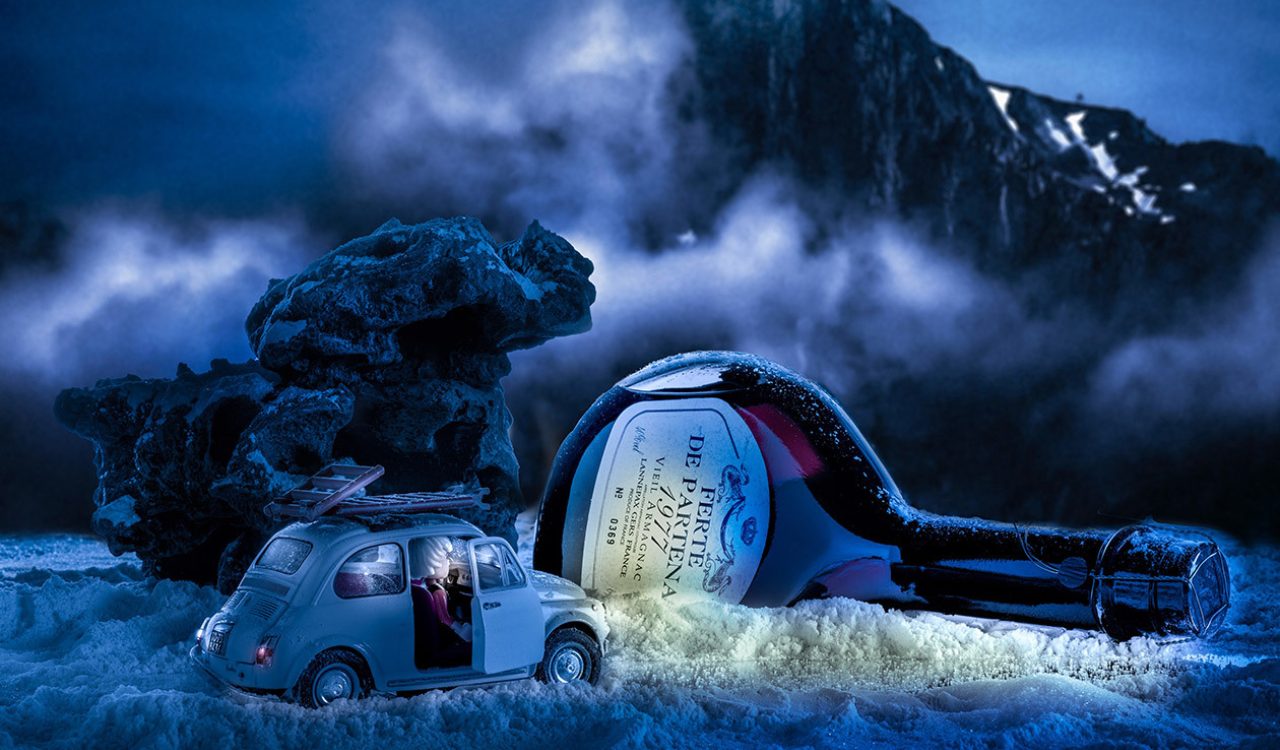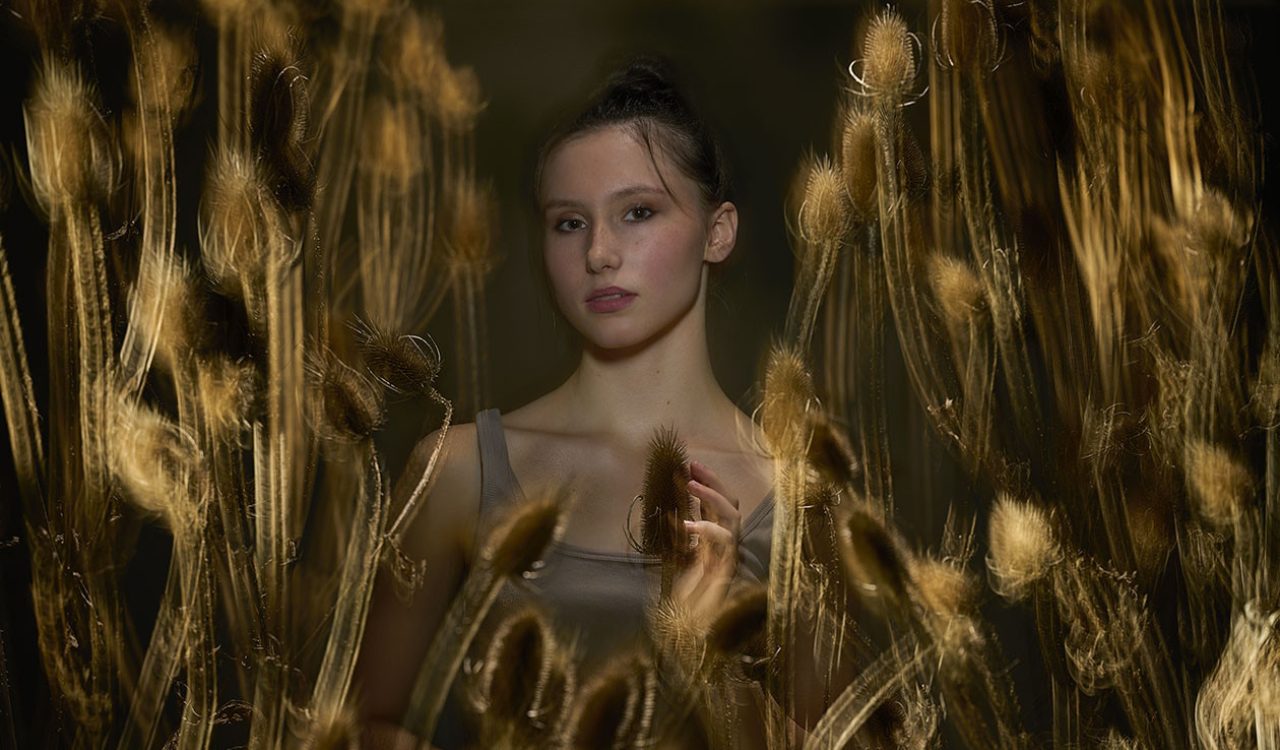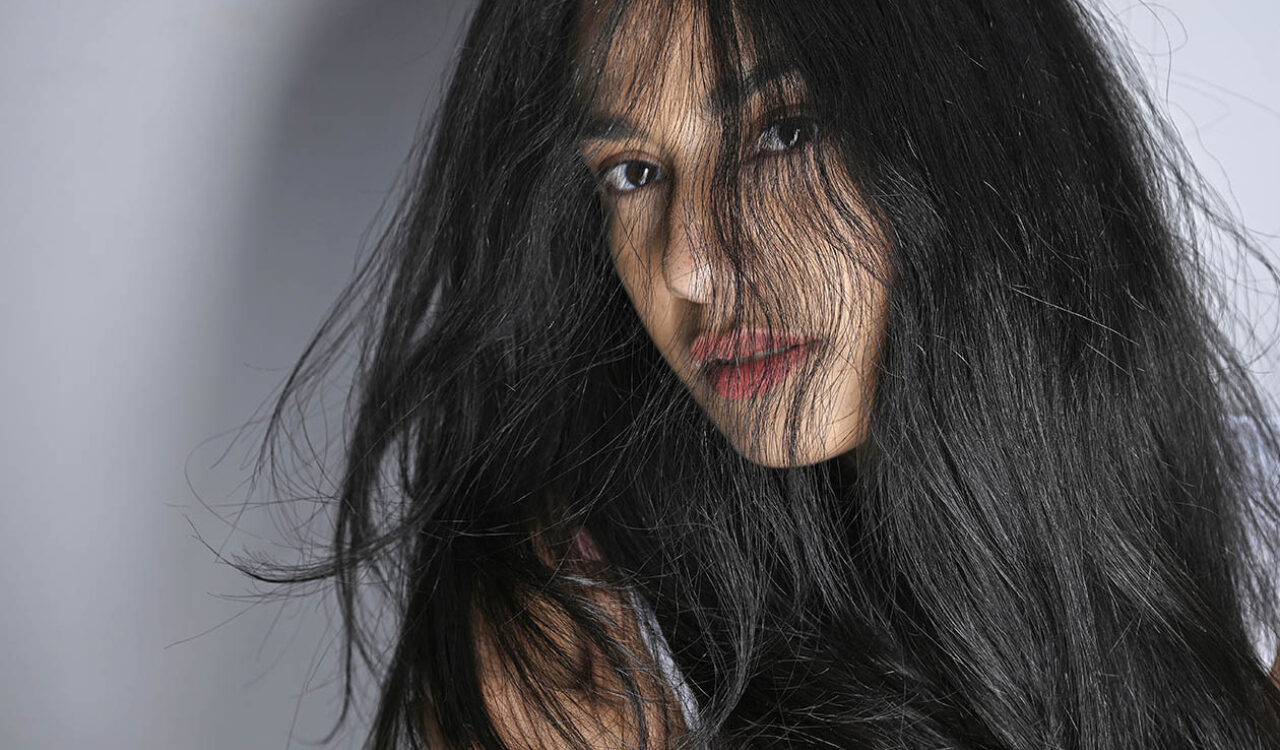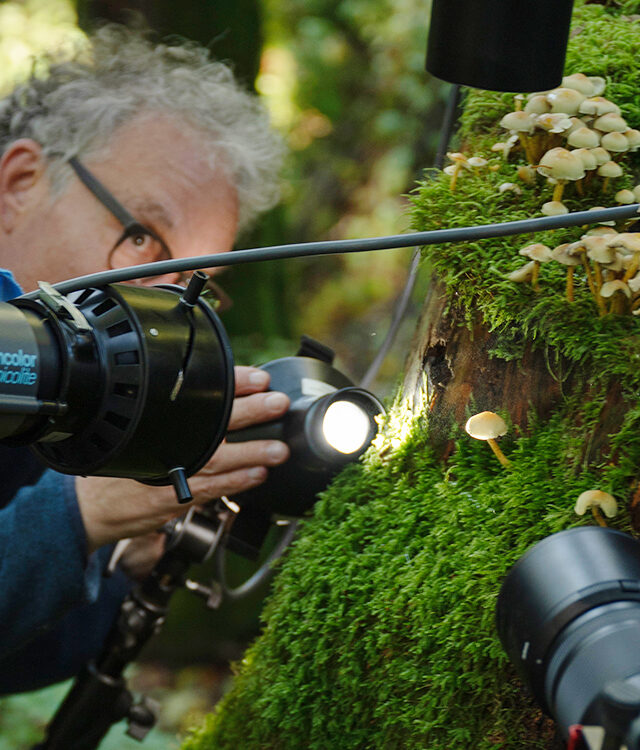Photography of glossy objects can quickly become very complex. Setting up more and more light is rarely the right solution, especially for highly glossy objects. It is more promising to think about the use and especially the position of the light shapers used and to use small helpers like reflectors and flags correctly.
Here I try to solve the classic photographic problem of the shiny red wine bottle with only one single light source. To make it not too easy, the label also has shiny parts, in addition to matte elements. The bottle is to stand on a wooden table, and receive continuous contour lights over the entire length, which emphasize the shape of the bottle.
As light shaper I decide on a softbox 60x100 cm (1). This is long enough to produce the above-mentioned contour light and wide enough to get a gradation on an acrylic plate (2). This gradation of light makes the bottle appear round.

A few centimeters of the softbox hit the bottle directly and provide the clear contour. At the same time, this light is used on the opposite side via a white piece of cardboard (4) to illuminate the contour on the left.
A piece of black background paper (3) separates the contour light of the softbox from the beginning of the gradation. On the left, this separation is controlled by the distance between the reflectors (4) and (5).
A relatively large white cardboard reflects the light coming from the right onto the left side of the bottle and the label.
To pull the reflections in the bottle and especially the contour lights all the way down, I cover the table with aluminum foil. Once the bottle is perfectly illuminated, I remove it and photograph the empty table, then I mount the red wine bottle in this shot.
To make sure the background turns out properly black, I set up a black background about 2 meters away. Of course, this technique also works with other colored backgrounds - then most easily with a second light source.
When shiny or transparent objects are in front of camera, it's always worth using long focal lengths. These make the picture angle narrower and allow to work with the lights very close to the object.

The picture is taken with a medium format camera and a focal length of 150 mm. The exposure time was 1/500s and the aperture f/ 22 at ISO 100.







